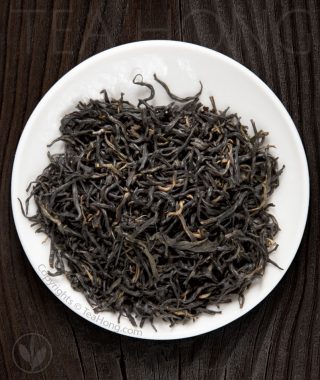Select a tea by category, region, taste or TCM character
At TeaHong.com, we try to put ourselves in our customers’ shoes. Different people have different priorities. Each sees the world differently. Naturally when it comes to selecting a tea, your criteria may not be the same as that of any other tea drinkers. That is why we group our tea products in different ways so you can see them in the context that is closest to how you think when selecting a tea.
Selection by Tea Category
The most common way to group different varieties of tea is by the category of processing method with which they are produced. Some call it Tea Classification, others Tea Categorisation. We think the later label is semantically more accurate.
Many connoisseurs and tea specialists organise their collections with this concept.
The above chart shows the five main categories: Green, Black, White, Pu’er ( Post-Fermentation ) and Oolong teas. Click the pie chart to browse the category of tea, click on your choice and enjoy the browse!
Need more info about a category before seeing the products? Here are some articles:
Selection by Taste
Teas are like raw gems. The true taste of each awaits the revelation made possible by the way you make it. Your personal need matters. It may change according to mood, time of the day, and occasions.
Experience and explore
Begin by tasting a few selections using various infusion styles to gain more specialist understanding of the finesses and differences. Relate this with your personal preferences and you will gradually carve out a direction in building your own repertoire of tea. This will be your very own line that best suits your taste and your needs. With repeated usage your senses and perceptions will deepen. This will empower you with the connoisseur skill to easily master yet more varieties to continue to gain levels in the vast world of tea.
Selection by TCM Characters
This is for those who understand the needs of answering the voice of the body. A well customised and balanced collection not only helps to maximise tea’s health benefits, but also tea’s gastronomic qualities. At Tea Hong, we categorise our collection by traditional Chinese medicinal character.
Information on a tea page
Detail information on each tea page includes a description, taste profile, infusion tips and a few properties described with icons. This article gives a general orientation in case you want to prepare yourself before browsing.
Customer Reviews
Yet another way to get an idea is to see how other customers see our products. Read a few random reviews they have posted in this site, and click on the link to go to the product page:
- Tobias D
Luan Guapian Supreme, traditional green tea
I find it amazing that you, as such a committed oolong drinker, could adapt to the entirely different sensory dimension of an ancient style green tea to give an account of such detailed taste experience. Amongst all our green tea selections, Luan Guapian and Bamboo Leaf are two most “untamed” style of tea. Particularly for people who grew up in a culture of teabags, tea mixes or bottled tea, as I dare to point out cultural-incorrectedly, these teas can be nakedly too real in their embodiment of the raw tea-ness ( more so even than pu’er maocha in many ways ). Yet your words describe so intricately its wonders the same of which have convinced me to include them in my repertoire. I hope more could have the same open-mindedness in the epicurean sphere of tea. Maybe it will then be a much more peaceful world.
Leo Kwan
Bada 2011, Pu’er shu cha
Rooster Crowing in My Cup
This tea is the exact color of black coffee with the full body to match it. Zero bitterness. Holds up for multiple infusions, consistently producing the same dark, liquid silk — cup after cup. It’s already on my reorder list.
Karen AgerHoney Orchid, Phoenix dancong oolong
2013 vs 2011
Hello Sofina, this is a great question. No one can be 100% sure of how the 2013 will mature. However, given proper storage condition, we believe this stock will become a better tea in two year’s time than the 2011 batch now. We agree with you that there will be more tastes and thereby to mature into a fuller body and a mellowed down astringency. If you are interested in maturing this tea, we shall launch a new bigger pack size that will be more advantageous for maturing. Hopefully that’s before this batch is sold out. 😉
Siu PB











































Pasha 2013, matured Pu’er shengcha cha bing
In short: One of the best, if not the best, Pu’er teas I’ve tasted.
In some way this is the Pu’er version of Honey Orchid Supreme, so I think most people who love that tea will also like this one. It has strong notes of honey and some fruity undertones of peaches, orange, and apricots. The first infusions have some woody / mossy notes that remind me of an old forest. In the later infusions this gets replaces by a very pleasant and soft sweetness that gives the tea a very optimistic energy. The Cha Qi of this tea increases concentration while still calming the body.
The aftertaste that remains in the mouth after drinking the tea is probably the best I’ve had from Pu’er teas. It’s sweet and fruity without any dryness or bitterness. It stays in the moth for quite long.
I usually brew this tea in a Sheng-Pu’er-seasoned Zini Yixing clay pot, because the clay thickens and softens the tea even more to enhance the mouth feel. But it also brews very well in porcelain or silver. It has become one of my favorite teas.